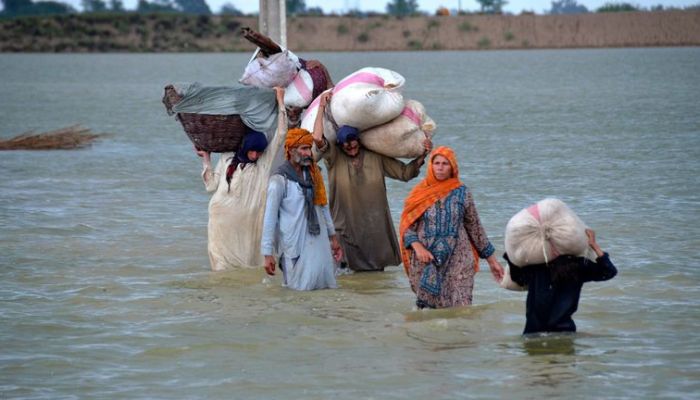
Synthesizing the cost of a natural disaster into a dollar-based estimate strips out the mental, emotional, and human costs of a natural disaster. It is easy to calculate economic costs, but it is impossible to assess the psychological or emotional cost of people who have been displaced, who have lost a loved one, or who lost all of their capital in a flood or any other natural disaster.
The floods of 2022 have wreaked the kind of destruction that has never been seen in the country, dwarfing the 2010 floods. More than 30 million people have been displaced, while more than one million houses have been completely or partially destroyed. This effectively means that a million households have nowhere to call home, and have lost their primary capital asset
The flood-affected areas are already among the more economically backward areas in the country. A natural disaster acting as an economic shock has effectively wiped out whatever little capital more than a million households had. Hundreds of thousands of animals have died in the floods, and in an area where livestock is not only a source of income but also a source of nutrition, such a loss can prove fatalistic.
The flood-affected areas are also those with little financial inclusion, wherein most savings are in the form of gold, cash, houses, or livestock. As rain wiped out all of these assets without any discrimination, it will be impossible to estimate the loss of private wealth of an already economically vulnerable group. Such losses can potentially hurt the psychological health of the household, potentially scarring them for life.
Another much-ignored facet is that of education. Hundreds of schools have been destroyed, and it will take some time before any reconstruction even begins, let alone is completed. School enrollments in the country are already embarrassingly low even when compared to peer economies. With more than 30 million people displaced, of which almost half are children and young adults, access to education has been permanently hampered till the time of reconstruction is completed. The loss of school days, or even a year pushes back a whole generation – a cost that can never be quantified.
There may be hundreds of thousands of people with serious medical conditions, ailments, or special needs. Their suffering due to the disaster would be amplified in absence of dedicated medical facilities, as all attention would be diverted toward immediate relief. Their suffering would be drowned out by a larger crisis, while individuals continue to suffer.
Households have lost thousands of acres of crops, orchards, and vegetation which were not only a source of income but also a source of subsistence. A complete wipeout of agricultural produce means a significant impact on household income while eroding the availability of capital that could be used for sowing in the coming crop cycle. The economic and psychological impact of losing a source of subsistence cannot be captured in spirit by a dollar-based estimate.
More than 5,000 kilometers of roads have been ravaged, constraining supply chains in the process and resulting in the movement of goods from one part of the country to another. Such constraints would potentially lead to higher prices of staples as demand outstrips supply. In a scenario where a large portion of the wealth of households has been wiped out, and incomes have eroded, constrained supply of even the most basic essentials results in runaway inflation in affected areas.
The economic loss that can be attributed to households is staggering. As the ravaging floods have destroyed more than a million houses, it is estimated that there has potentially been a wealth erosion of more than $1.6 billion. Almost $1.2 billion from this has been the erosion of wealth in Sindh, the highest among all provinces. Reconstruction of these houses is estimated to cost roughly $2.5 billion, which implies a massive cost to households who have already lost a substantial portion of their wealth, and capital base. Similarly, the loss to crops and livestock is estimated to be more than $2.5 billion. In effect, the most vulnerable economic segment of the country saw more than $5 billion of its private wealth being wiped out, and now remains at the mercy of the state, and donors.
The country needs a reconstruction plan, and it needs it fast. The reconstruction needs to be sustainable. No lessons were learned from the 2010 floods, resulting in catastrophic implications. If lessons are not learned and infrastructure is not developed to be resilient to climate shocks, such destruction may become a recurring feature that would not only take a heavy toll on the economy but also on the mental and physical health of people.
The state needs to step up, or another few economic and climatic shocks would completely incapacitate the ability of the sovereign to operate or take care of its inhabitants. It is time human cost is considered paramount, and reconstruction is done by prioritizing humans, rather than donors or contractors.



0 Comments